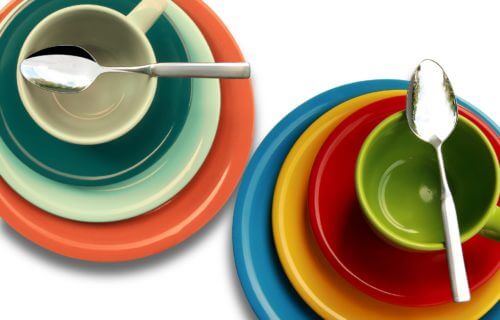PORTSMOUTH, United Kingdom — Are you a picky eater? You may want to give some foods you don’t like another chance in a different color dish!
A new study finds the color of bowls and plates can actually influence the taste perception of certain people — especially those who are very picky about what they eat. Researchers from the University of Portsmouth say this is the first study to find a link between the color of dishware and food neophobia, or the reluctance to eat or try new foods.
Previous research has found that the smell and texture of food can affect how it tastes to picky eaters. The new study followed 50 people, splitting them into two groups: picky and non-picky eaters. Afterwards, the team served each person snacks in red, white, and blue bowls.
Results show that each color changed the perceived saltiness and desirability of eating the foods for picky eaters. Non-picky eaters did not show any shift in their perception based on the color of the dishware their snacks came in.
Know a picky eater? Avoid red dishware!
More specifically, the team found that picky eaters thought snacks in red and blue bowls were saltier than those in white bowls. Moreover, picky eaters found the snacks in red bowls to be the least desirable.
“Having restricted diets can lead to nutritional deficiencies as well as health problems like heart disease, poor bone health and dental issues. There is also a social cost because normally enjoyable moments between family members can easily turn into stressful, anxious, and conflict-causing situations when picky eaters feel ashamed or pressured to eat food,” says Dr. Lorenzo Stafford, a researcher on the sense of smell in the Department of Psychology, in a university release.
“That is why it’s important to understand the factors that act to ‘push and pull’ this behavior.”
READ: Best Cookware Sets For 2023: Top 4 Kitchen Collections Most Recommended By Experts
The team notes that picky eating can lead to people having a very limited diet. They gravitate to foods prepared only in certain ways (like being fried or broiled), have strong food dislikes, and have a lot of difficulty accepting new foods. Picky eaters generally consume fewer than 20 different items throughout their lives.
“This knowledge could be useful for those trying to expand the repertoire of foods,” adds Dr. Stafford. “For example, if you wanted to encourage a picky eater to try more vegetables well known to be viewed as bitter, you could attempt to serve them on a plate or bowl that is known to increase sweetness.”
“Through further research we could determine ways to help positively affect a person’s diet, and as a result their mental and physical health.”
The findings are published in the journal Food Quality and Preference.

